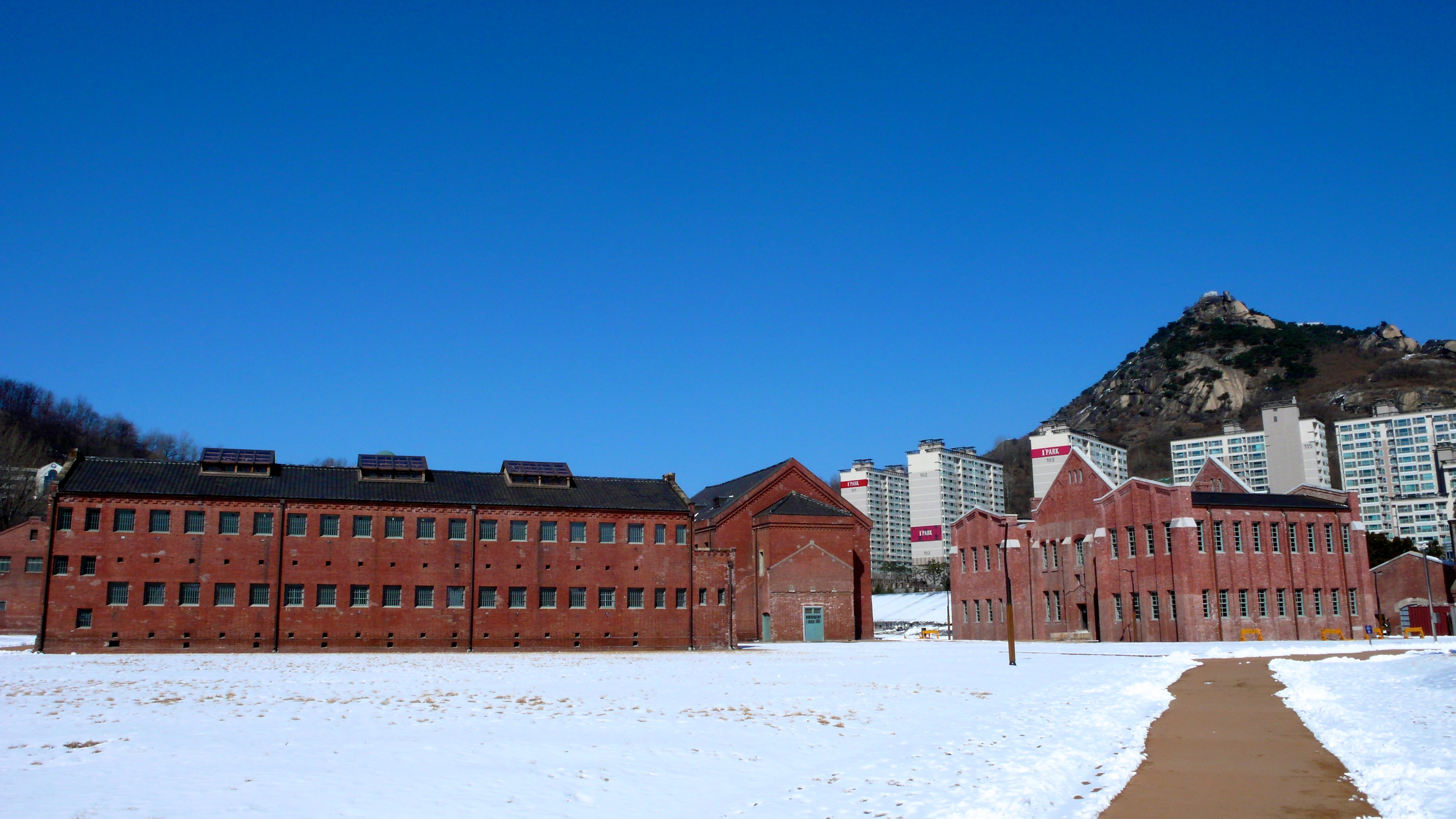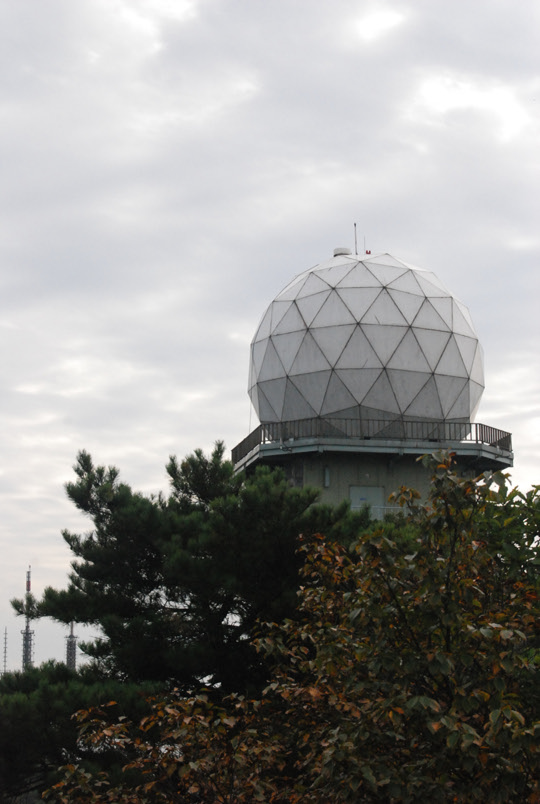|
Kimhyonggwon
Kimhyŏnggwŏn County is a ''kun'', or county, in southeastern Ryanggang province, North Korea. It borders South Hamgyŏng to the south. Previously known as Pungsan, it was renamed by Kim Il Sung in 1990. He named it after his uncle, Kim Hyŏng-gwŏn. It is known for its striking scenery and for the Pungsan Dog, a large breed of hunting dog. Geography Kimhyŏnggwŏn lies on the southeastern edge of the Kaema Plateau, and is covered with mountainous terrain. The Hamgyong Mountains and the Puksubaek Mountains both pass through the county. The highest peak is Paeksan. There are many streams; the chief among them is the Hŏch'ŏn River. Some 88% of the county's area is occupied by forestland. Climate Administrative divisions Kimhyŏnggwŏn county is divided into 1 ''ŭp'' (town), 1 ''rodonjagu'' (workers' district) and 17 ''ri'' (villages): Economy There are several hydroelectric power stations in the county. There is also a great deal of dry-field farming; the chief ... [...More Info...] [...Related Items...] OR: [Wikipedia] [Google] [Baidu] |
Kim Hyong Kwon
Kim Hyong-gwon (; 4 November 1905 – 12 January 1936) was a Korean revolutionary. He is known for attacking a Japanese police station in Japanese-occupied Korea and subsequently dying in Seoul's Seodaemun Prison where he was serving his sentence. Kim Hyong-gwon was an uncle of the founding North Korean leader, Kim Il-sung. As such, he is among the most celebrated of the Kim family members in North Korean propaganda. Kimhyonggwon County in North Korea is named after him. Personal life In his youth, Kim Hyong-gwon studied in Sunhwa school near his home in present-day Mangyongdae, Pyongyang. Kim was a revolutionary fighter and an active communist in the 1930s. His personality has been described as "hot-tempered". In August 1930, he led a small detachment of guerrillas across the Amnok (Yalu) river to Japanese-occupied Korea from Manchuria. His small group's actions near Pungsan at that time got noticed by the Japanese press. He captured two Japanese police cars, and both of ... [...More Info...] [...Related Items...] OR: [Wikipedia] [Google] [Baidu] |
Ryanggang Province
Ryanggang Province (Ryanggangdo; ko, 량강도, ''Ryanggang-do'', ) is a province in North Korea. The province is bordered by China (Jilin) on the north, North Hamgyong on the east, South Hamgyong on the south, and Chagang on the west. Ryanggang was formed in 1954, when it was separated from South Hamgyŏng. The provincial capital is Hyesan. In South Korean usage, "Ryanggang" is spelled and pronounced as "Yanggang" ( ko, 양강도, ''Yanggang-do'', ) Description Along the northern border with China runs the Yalu River and the Tumen River. In between the rivers, and the source of both, is Paektu Mountain, revered by both the Koreans and Manchurians as the mythic origin of each people. The North Korean government claims that Kim Jong-il was born there when his parents were at a Communist anti-Japanese resistance camp at the mountain. The North Korean-Chinese border for 20 miles east of the mountain is "dry, remote and mountainous, barely patrolled," making it one of the ... [...More Info...] [...Related Items...] OR: [Wikipedia] [Google] [Baidu] |
Hochon River
Hŏch'ŏn County is a county in South Hamgyŏng province, North Korea. It was created after the division of Korea, from portions of Tanch'ŏn and P'ungsan. Geography Most of the county is steep and mountainous, particularly in the southeast. There are numerous high peaks. The Pujŏllyŏng and Kŏmdŏk Mountains (검덕산맥) pass through the county, with the highest peak at Kŏmdŏksan. The chief stream is the Namdaech'ŏn. Approximately 90% of the county is forestland. Administrative divisions Hŏch'ŏn county is divided into 1 ''ŭp'' (town), 5 '' rodongjagu'' (workers' districts) and 17 '' ri'' (villages): Economy Mining and electrical power are the chief local industries. There are deposits of copper, iron ore, lead, and zinc. Local crops include maize, soybeans, and potatoes, but cultivation is difficult due to the mountainous terrain. Sangnong mine is located in this county, to the west of Sangnong-rodongjagu. Transportation Hŏch'ŏn county is served by the H� ... [...More Info...] [...Related Items...] OR: [Wikipedia] [Google] [Baidu] |
Pungsan Dog
The Pungsan, Phungsan, Korean Phungsan, or ''Poongsan'' (Chosongul: 풍산개; Hanja: ) is a breed of hunting dog from Korea, named for originating in Kim Hyong Gwon County, formerly Phungsan county. They were bred in the Kaema highlands of what is now North Korea, and were traditionally used as hunting dogs. The dog is a rare breed, and is sometimes smuggled over the North Korea–China border. The dog was made a national monument of North Korea in April 1956, and the national dog of the DPRK in 2014. Breed According to ''NK News'', international kennel clubs consider Pungsan dogs as "little more than a local Spitz-type variant of Siberian huskies, only less physically impressive and with behavioral issues". History According to the Encyclopedia of Korean Culture by the Academy of Korean Studies under the Ministry of Education, Science and Technology (South Korea) of the South Korean government, the Pungsan dog was first recognized as a national symbol in the Korean ... [...More Info...] [...Related Items...] OR: [Wikipedia] [Google] [Baidu] |
List Of Second-level Administrative Divisions Of North Korea
This is a list of all second-level administrative divisions of North Korea, including ''cities'', ''counties'', ''workers' districts'', ''districts'', and ''wards'', organized by province or directly governed city. Pyongyang Directly Governed City * 18 wards (guyok): Chung, Pyongchon, Potonggang, Moranbong, Sosong, Songyo, Tongdaewon, Taedonggang, Sadong, Taesong, Mangyongdae, Hyongjesan, Ryongsong, Samsok, Ryokpo, Rangnang, Sunan, Unjong * 2 county (kun): Kangdong, Kangnam Rason Special City * 1 ward (guyok): Rajin * 1 county (kun): Sŏnbong Chagang Province * 3 cities (si): Kanggye, Hŭich'ŏn, Manp'o * 15 counties (kun): Changgang, Chasŏng, Chŏnch'ŏn, Ch'osan, Chunggang, Hwap'yŏng, Kop'ung, Rangrim, Ryongrim, Sijung, Sŏnggan, Songwŏn, Tongsin, Usi, Wiwŏn North Hamgyŏng Province * 3 cities (si): Ch'ŏngjin, Hoeryŏng, Kimch'aek * 12 counties (kun): Myŏnggan, Hwadae, Kilju, Kyŏngsŏng, Musan, Myŏngch'ŏn, Onsŏng, Ŏrang, ... [...More Info...] [...Related Items...] OR: [Wikipedia] [Google] [Baidu] |
Provinces Of North Korea
Provinces are the first-level division within North Korea. There are 9 provinces in North Korea: Chagang, North Hamgyong, South Hamgyong, North Hwanghae, South Hwanghae, Kangwon, North Pyongan, South Pyongan, and Ryanggang. History Although the details of local administration have changed dramatically over time, the basic outline of the current three-tiered system was implemented under the reign of Gojong in 1895. A similar system also remains in use in South Korea. A province () are the highest-ranked administrative divisions in North Korea. Provinces have equal status to the special cities. List of provinces The populations listed for each province are from the 2008 North Korea Census. From this census, there are an additional 702,372 people living in military camps. Claimed provinces North Korea claims seven provinces on the territory controlled by South Korea. While people's committees for these claimed provinces were elected in 1950 during the Korean W ... [...More Info...] [...Related Items...] OR: [Wikipedia] [Google] [Baidu] |
Iron Sulfide
Iron sulfide or Iron sulphide can refer to range of chemical compounds composed of iron and sulfur. Minerals By increasing order of stability: * Iron(II) sulfide, FeS * Greigite, Fe3S4 (cubic) * Pyrrhotite, Fe1−xS (where x = 0 to 0.2) (monoclinic or hexagonal) * Troilite, FeS, the endmember of pyrrhotite (hexagonal) * Mackinawite, Fe1+xS (where x = 0 to 0.1) (tetragonal) * Marcasite, orthorhombic FeS2 * Pyrite, cubic FeS2 (fool's gold) * Arsenopyrite Arsenopyrite (International Mineralogical Association, IMA List of mineral symbols, symbol: Apy) is an iron arsenic sulfide (FeAsS). It is a hard (Mohs scale of mineral hardness, Mohs 5.5-6) metallic, opaque, steel grey to silver white mineral wi ... (''mispickel''), FeAsS, or Fe(As-S), Fe(III) mixed arseno-sulfide (monoclinic) Synthetic * Iron(III) sulfide, Fe2S3 * Iron-sulfur clusters, includes both synthetic and biological Biological * Iron–sulfur protein {{DEFAULTSORT:Iron Sulfide Iron compounds Iron minerals Su ... [...More Info...] [...Related Items...] OR: [Wikipedia] [Google] [Baidu] |
Flax
Flax, also known as common flax or linseed, is a flowering plant, ''Linum usitatissimum'', in the family Linaceae. It is cultivated as a food and fiber crop in regions of the world with temperate climates. Textiles made from flax are known in Western countries as linen and are traditionally used for bed sheets, underclothes, and table linen. Its oil is known as linseed oil. In addition to referring to the plant, the word "flax" may refer to the unspun fibers of the flax plant. The plant species is known only as a cultivated plant and appears to have been domesticated just once from the wild species '' Linum bienne'', called pale flax. The plants called "flax" in New Zealand are, by contrast, members of the genus '' Phormium''. Description Several other species in the genus ''Linum'' are similar in appearance to ''L. usitatissimum'', cultivated flax, including some that have similar blue flowers, and others with white, yellow, or red flowers. Some of these are perennial ... [...More Info...] [...Related Items...] OR: [Wikipedia] [Google] [Baidu] |
Hydroelectric Power
Hydroelectricity, or hydroelectric power, is electricity generated from hydropower (water power). Hydropower supplies one sixth of the world's electricity, almost 4500 TWh in 2020, which is more than all other renewable sources combined and also more than nuclear power. Hydropower can provide large amounts of low-carbon electricity on demand, making it a key element for creating secure and clean electricity supply systems. A hydroelectric power station that has a dam and reservoir is a flexible source, since the amount of electricity produced can be increased or decreased in seconds or minutes in response to varying electricity demand. Once a hydroelectric complex is constructed, it produces no direct waste, and almost always emits considerably less greenhouse gas than fossil fuel-powered energy plants. [...More Info...] [...Related Items...] OR: [Wikipedia] [Google] [Baidu] |
Korea Meteorological Administration
The Korea Meteorological Administration () (KMA) is the national meteorological service of the Republic of Korea. The service started in 1904 joining the WMO in 1956. Numerical Weather Prediction is performed using the Unified Model software suite. History The current Administration was established in 1990. Temporary observatories set up in 1904 in Busan, Incheon, Mokpo and elsewhere were precursors to the current KMA. The Central Meteorological Office (CMO) was established in August 1949. In April 1978, CMO was renamed the Korea Meteorological Service(KMS). In 1999, the Administration introduced a meteorological supercomputer for forecasting. As of November 2021, supercomputers ''Guru'' and ''Maru'' ranked 27th and 28th respectively in the world. In 2010, the KMA launched South Korea’s first geostationary meteorological satellite, the Communication, Ocean and Meteorological Satellite (COMS), also known as Chollian. Chollian started its official operation in 2011. The Seou ... [...More Info...] [...Related Items...] OR: [Wikipedia] [Google] [Baidu] |



